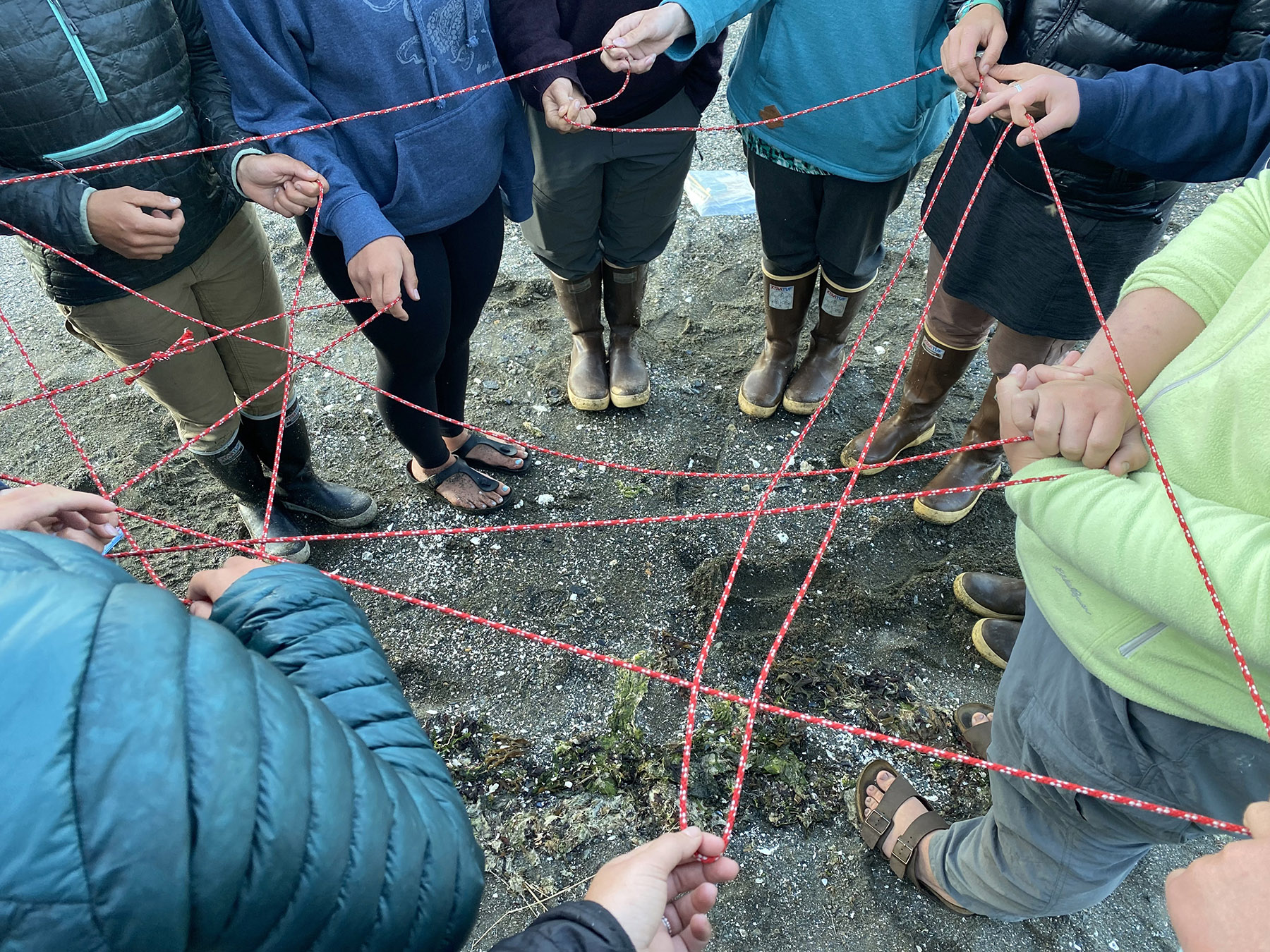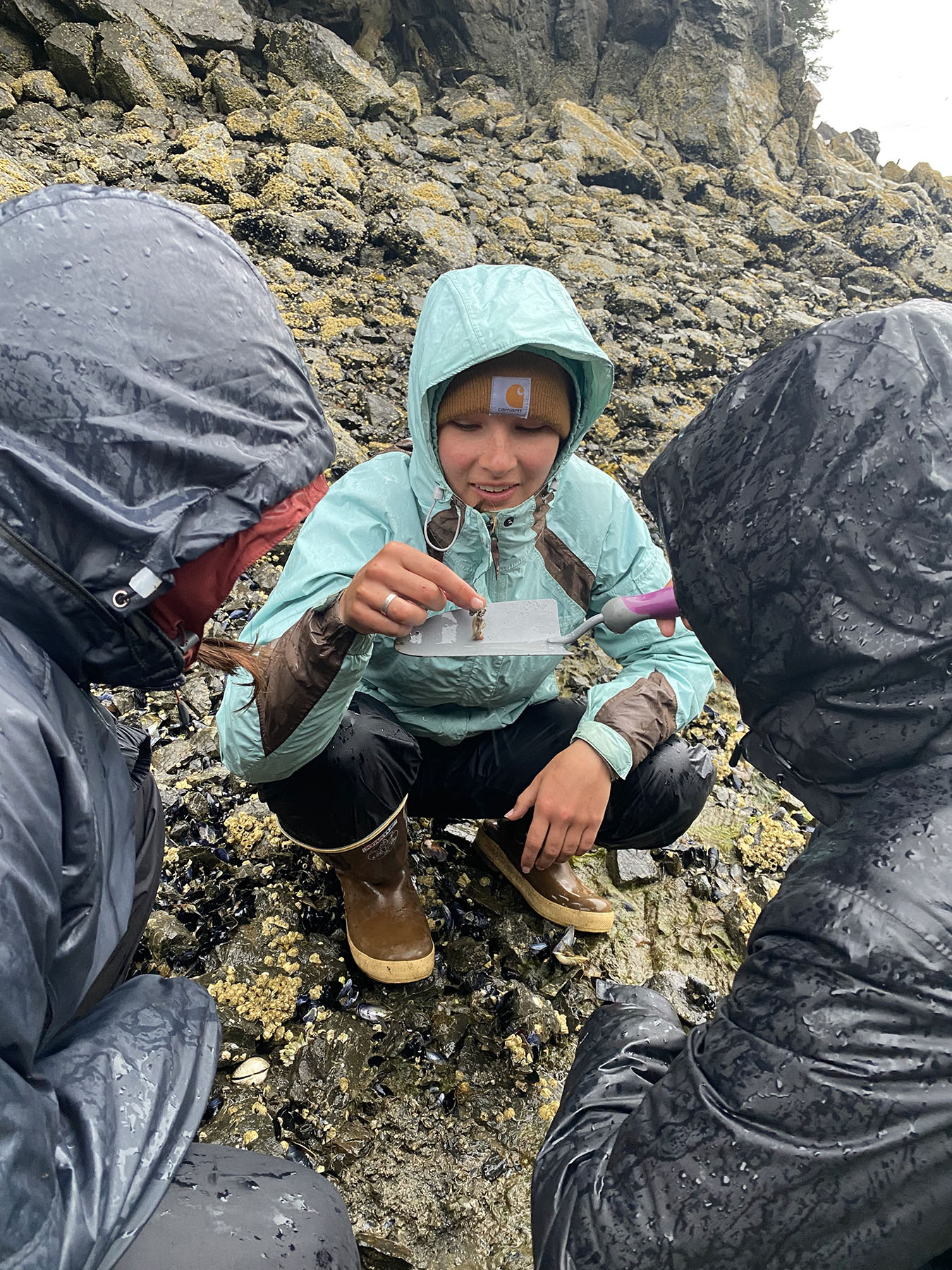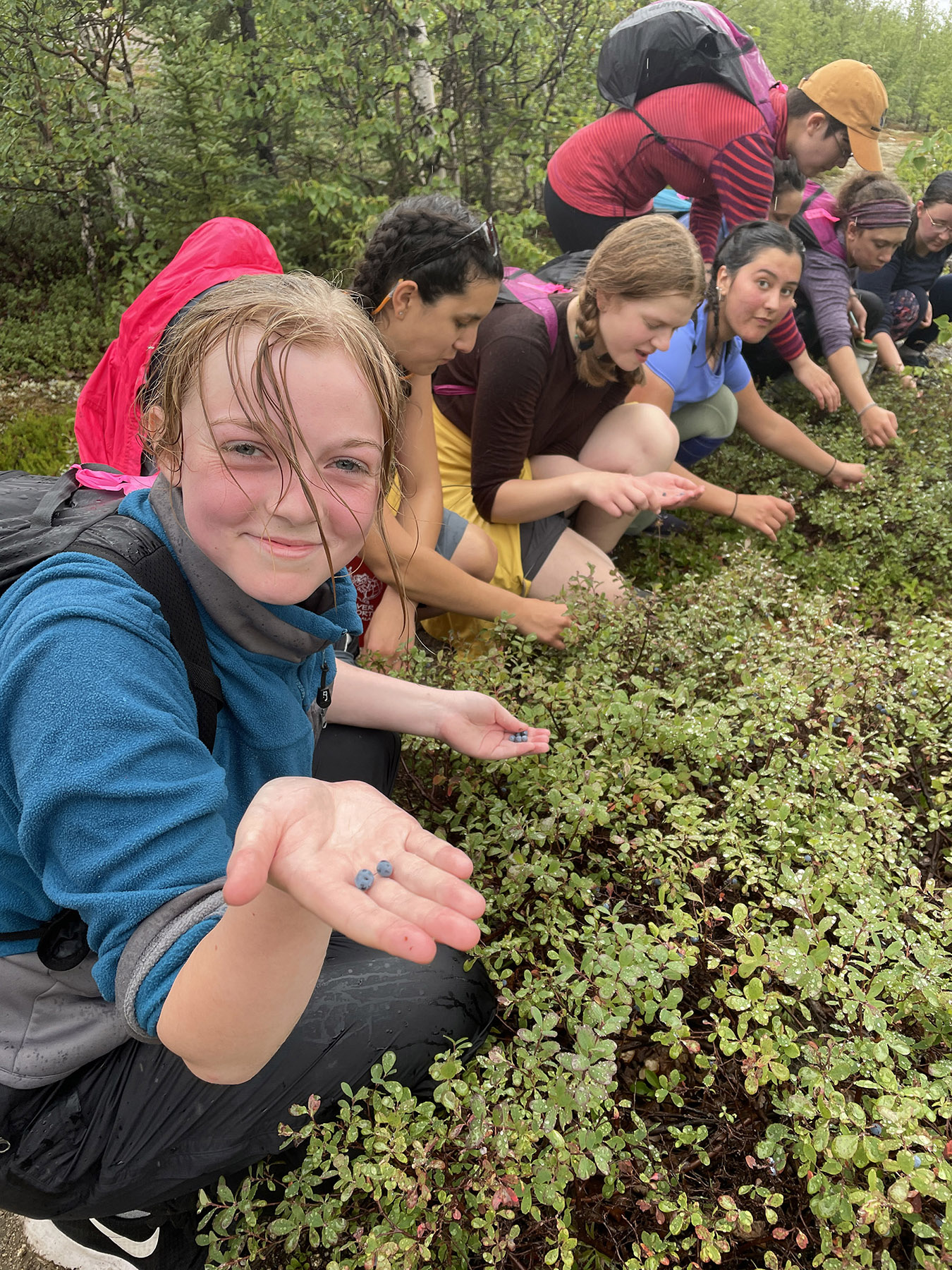Summer of Science
The members of the 2021 Girls on Water expedition.
Earlier this summer, 18 high school aged Alaskan girls piled into kayaks and packrafts and emerged with both new ecological knowledge and a lot more confidence in themselves.
That’s the idea behind “Girls on Water” and “Girls in the Forest,” two EPSCoR-sponsored experiential learning programs that overcame COVID hurdles to hold successful wilderness expeditions in 2021. In July, nine 16- and 17-year-old girl-identified youths from across the state took part in “Girls on Water,” a week-plus scientific kayak expedition in Kachemak Bay. Then in August, nine “Girls in the Forest” spent more than a week packrafting the Chena River and learning about fire science along the way.
“The participants just did such an awesome job going with the flow,” said Girls on Water lead instructor Lauren Sutton. “This was such a fun, fun group that was super-inquisitive, and I think they inspired all of us instructors every day.”
Girls on Water

Girls on Water participants learn about the food web through a “web of life” activity.
This was the second iteration of the Girls on Water program following a 2019 expedition, which had been based out of the NOAA Kasitsna Bay laboratory across Kachemak Bay from Homer. The lab was inaccessible this year due to COVID protocols, so instead the girls based out of the nearby Across the Bay Tent and Breakfast for their initial kayak training.
“These girls were incredible, most of them coming into this program having had no kayak experience, and jumping in boats and then flipping them right back over on day two,” noted the group’s kayak guide, Laura Jackson, describing a kayak drill. “All of the girls just dove right in literally and figuratively.”
Their training complete, the group paddled into Tutka Bay and spent two nights at Arch Beach before continuing on to Isthmus Beach for four nights. They paddled all the way to the head of Tutka Bay before returning to Arch Beach for a night and then back to the Tent and Breakfast, for a total trip distance Jackson estimated at around 40 miles.

Girls on Water participants study marine life.
The expeditions are designed to help the girls gain confidence in the backcountry, but also to expose them to art and to field science. To that end, they took art and science lessons and spent considerable time gathering scientific data along the route. “We did a lot of different ecological surveys in the intertidal, learning how to use quadrats, and making different observations in the intertidal zone, looking at the different plants and animals that live there,” explained instructor Steffi O’Daly.
At expedition’s end, the participants all put together science-fair-style poster presentations of their findings, with three individuals working on each study. The posters examined the impacts of changing salinity on blue mussels, of water salinity on trophic diversity and of tidal height on barnacle size and quantity. The groups then recorded the presentations and later shared them with an online audience.
O’Daly said the quality of the presentations was “amazing” given the short time period the students had to prepare them: two to two and a half days to collect data and half a day to analyze it and prepare the posters.
And Sutton noted that they were created without the aid of perhaps the 21st century’s greatest research shortcut. “None of our science groups had access to Internet,” she said. “And so all of the background information, all of the conclusions that they came up with were from each participant being a critical thinker, which is one of the most important things I think you can do as a scientist, is rely on the knowledge that you’ve gained and how it can apply to what you’re looking at.”
Girls in the Forest

Girls in the Forest participants and instructors practice their packraft skills in Chena Lake Recreation Area.
The first-ever “Girls in the Forest” expedition was also based around boats, but this set of students had their minds in the trees. The nine high school students who explored the Chena River State Recreation Area east of Fairbanks in August took a close look at the impacts of some of the area’s recent forest fires.
“We learned about boreal forest ecology in Interior Alaska and how fire plays a really important role in those forest ecosystems, and we learned about the surface vegetation, underneath the surface and what’s up in the trees,” explained lead instructor Klara Maisch.
The expedition took less of a linear approach than Girls on Water. The participants stayed in Fairbanks and learned packraft skills at Chena Lake Recreation Area in North Pole before heading to the Chena for the rest of the trip. Their week in the Chena Riverr ec area included days hiking the Angel Rocks and Mastadon Creek trails and several days floating sections of the Upper Chena, including an epic roughly 20-mile day between the Red Squirrel and Rosehip campgrounds.
Girls in the Forest instructor Anna Talucci demonstrates tree coring.
The participants learned about both art and field science, and they visited the sites of both the 2004 Tors Fire and the 2019 Nugget Creek Fire to establish transects and collect data. Halfway through the trip the weather turned from idyllic to sopping, which offered the group an unexpected opportunity: they were able to visit the site of the Munson Creek Fire, which had been burning in the area for much of the summer but was now subdued by the rain. “After all these transects that everyone was doing in these older fires, it was great to see post-fire, what that looks like,” noted instructor and fire ecologist Anna Talucci.
Like the Girls on Water, Girls in the Forest participants turned their studies into science presentations, except this group created online slideshows instead of posters. Topics included the impacts of fire on low-bush cranberries and on moose diet; the importance of mosses in wildfire study; comparisons of soil layers subjected to different levels of burn severity; and an examination of the relative rates of post-fire colonization by deciduous trees and conifers.

Girls in the Forest participants enjoy some of the bounty of the boreal forest.
After the expedition, the participants were given the chance to reflect on their experiences. They spoke about learning to function as part of a team, to be more open-minded, and to push themselves. “I learned that getting out of my comfort zone can get me a lot further than I expected,” noted one. “I learned that when I just open up to learning something new and don’t worry about the possible outcomes, the activity can be a lot more fun,” said another.
The participants were also asked about another important aspect of the expedition: a week away from the Internet. Participants were uniformly positive about the experience. “It was just really nice to go a week without having to stress about anything other than what I was doing at that moment,” noted one. And as another put it, “I guess I was uncomfortable with feeling relaxed.”
Both Girls on Water and Girls in the Forest are free of charge to all participants. Both are modeled on an original program called “Girls on Ice,” in which high-school girl-identified youths take part in scientific expeditions to a glacier. They’re both part of the worldwide Inspiring Girls Expeditions program; for more information visit https://www.inspiringgirls.org/. Both Girls on Water and Girls in thw Forest will return in summer 2022, with the application period for both opening in mid-December 2021.

